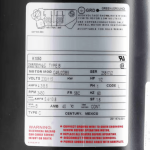Yes, I probably should have spent the extra money and gotten a Hayward motor.
All the mechanical stuff came apart and went back together like a breeze. But now it's time to wire it up, and when I remove the cover for the new motor, there is nothing I can discern that allows me to select between 115 and 230 volts. Please see pictures.
I know very little about electricity. Could it be some sort of auto-select/auto-detect? Many thanks!
Pictures are old Hayward voltage selector, new after-market motor label and electrical connectors, etc.
All the mechanical stuff came apart and went back together like a breeze. But now it's time to wire it up, and when I remove the cover for the new motor, there is nothing I can discern that allows me to select between 115 and 230 volts. Please see pictures.
I know very little about electricity. Could it be some sort of auto-select/auto-detect? Many thanks!
Pictures are old Hayward voltage selector, new after-market motor label and electrical connectors, etc.







